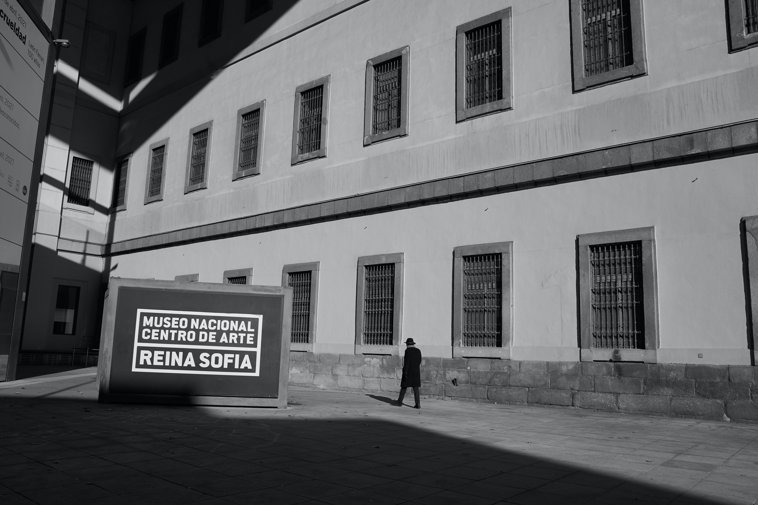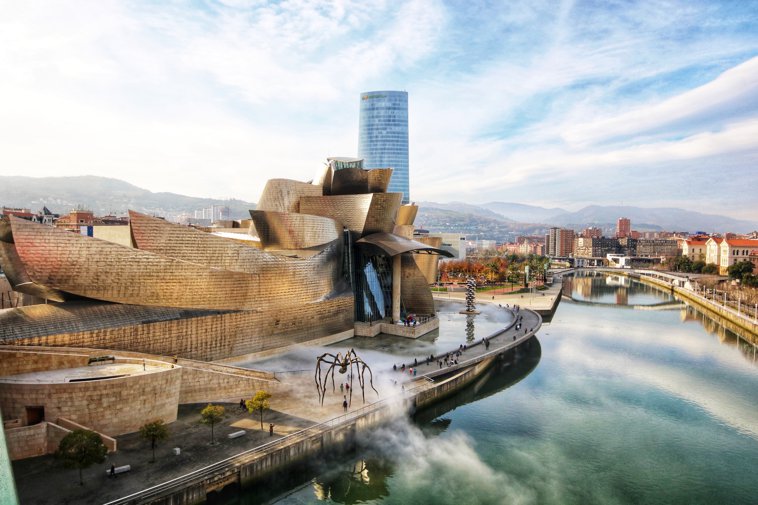Top 5 Museums to Visit in Spain
Questions This Article Answers
What are the top museums in Spain?
What are the main works of art in el Prado?
Which museum is Guernica in?
What to see at the Guggenheim in Bilbao?
Triángulo del Arte
The Triángulo del arte(Triangle of Art) or Triángulo de oro(Golden Triangle) is a term used to refer to three major art museums situated close to one another on the Paseo del Prado(Prado Avenue) in Madrid. These museums, which are listed below, collectively house one of the world's most outstanding collections of arte europeo(European art), with works ranging from la Edad Media(the Middle Ages) to la actualidad(the present day).
• Museo del Prado
• Museo Nacional Centro de Arte Reina Sofía
• Museo Thyssen-Bornemisza
The Most Important Museums in Spain
Museo del Prado (Madrid)
One of the most-visited art museums in the world, el Prado(The Prado) houses una colección magnífica(a magnificent collection) of European art from the 12th to early 20th centuries. It boasts masterpieces from Spanish greats like Francisco Goya(Francisco Goya), Diego Velázquez(Diego Velázquez), and El Greco(El Greco), as well as notable works from artistas internacionales(international artists), making it a must-see destination for entusiastas del arte(art enthusiasts).
What are the main obras de arte(works of art) to see in el Prado?
- Las meninas(The Ladies-In-Waiting) by Diego Velázquez: A captivating and enigmatic representación(portrayal) of the familia real española(Spanish royal family), this work is often regarded as Velazquez's obra maestra(magnum opus) and is a masterclass in perspectiva(perspective) and iluminación(lighting).
Museo Nacional Centro de Arte Reina Sofía (Madrid)

Dedicated to arte contemporáneo(contemporary art), this museum is home to many important works from 20th-century artistas españoles(Spanish artists). Its star attraction is the haunting Guernica(Guernica) by Pablo Picasso(Pablo Picasso), but it also features pieces by greats like Salvador Dalí(Salvador Dalí) and Joan Miró(Joan Miró).
Museo Thyssen-Bornemisza (Madrid)
Complementing the colecciones(collections) of the Prado and Reina Sofía, this museum houses art from the 13th century to the late 20th century. Its diverse collection spans from the Italian primitives to pop art and encompasses a vast range of estilos(styles) and periodos(periods), offering a comprehensive journey through la historia del arte occidental(Western art history).
If you're pressed for time and want to see the essentials in the Thyssen-Bornemisza, be sure to check out:
- Retrato de Enrique VIII de Inglaterra(Portrait of Henry VIII of England) by Hans Holbein the Younger: This is a striking portrait of the notorious rey inglés(English king) Enrique VIII.
- Les Vessenots en Auvers by Vincent van Gogh: This work shows the Dutch painter's unique style and emotional intensity.
Museo Guggenheim (Bilbao)

An architectural maravilla(marvel) designed by Frank Gehry, the Guggenheim Bilbao(Bilbao) has become a símbolo(symbol) of the city's regeneración(regeneration) and modernización(modernization). The museum's collection focuses on art from the mid-20th century to the present, and the edificio(building) itself, with its flowing formas metálicas(metallic forms), stands as a testament to innovative contemporary arquitectura(architecture).
Thinking of visiting the Guggenheim Bilbao? Don't forget to check out the following pieces of art:
- Puppy by Jeff Koons: Though technically outside the museum, this giant flower-covered escultura(sculpture) of a West Highland white terrier is one of the most recognized symbols of the Guggenheim Bilbao.
Museo Picasso (Barcelona)
Situated in the heart of Barcelona's casco antiguo(old town), this museum offers a deep dive into Pablo Picasso's años de formación(formative years). With over 4,000 obras(works), it provides an unparalleled look into the artist's early experiments, making it essential for anyone keen to understand Picasso's evolución(evolution).
Want to learn more about Spain? Check out the following articles!
• UNESCO World Heritage Sites: Central Spain
• UNESCO World Heritage Sites: Northern Spain
• UNESCO World Heritage Sites: Spain's Islands
• UNESCO World Heritage Sites: Southern Spain














